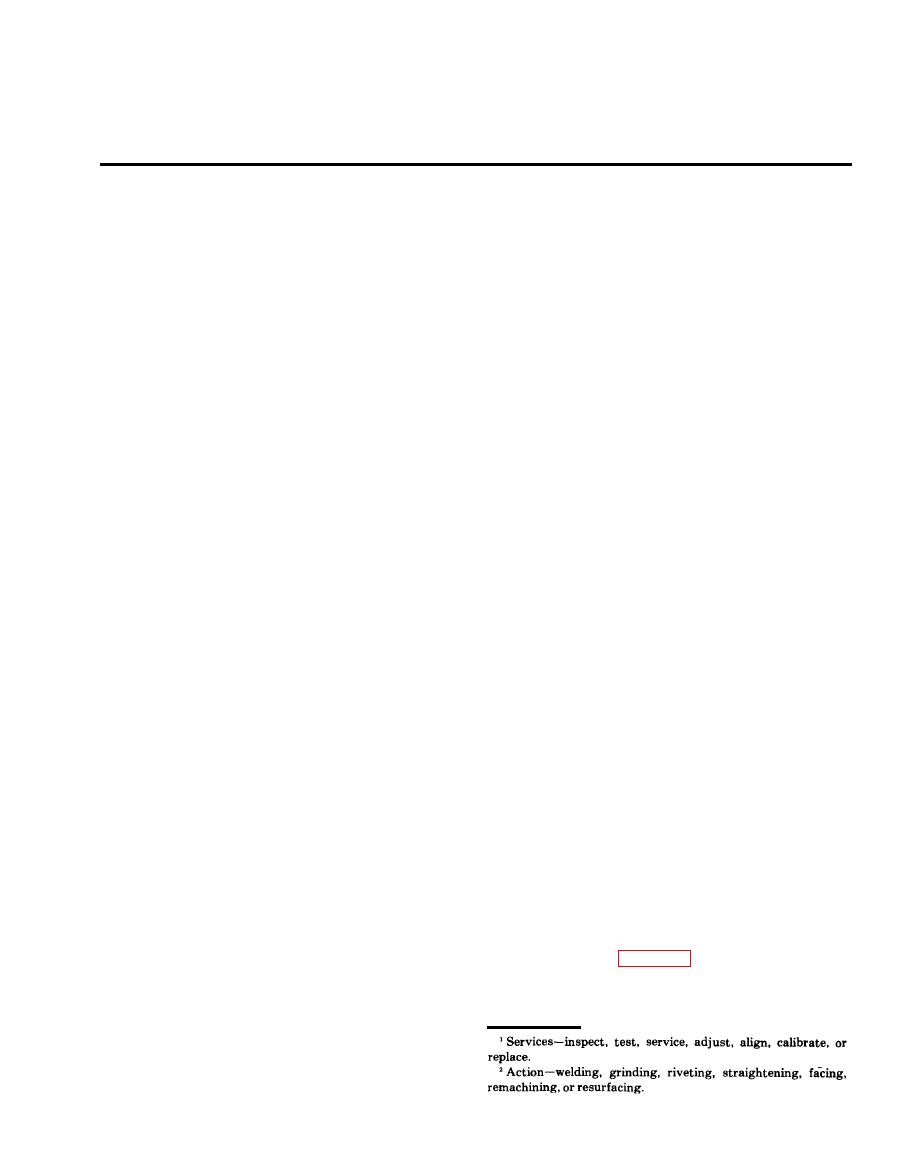
TM 9-1240-381-24&P
M A I N T E N A N C E ALLOCATION CHART (MAC)
INTRODUCTION
Section I.
B-1. General.
proper functioning of an equipment or system.
h. Replace. The act of substituting a serviceable
a. This section provides a general explanation of
like type part, subassembly, or module (component
all maintenance and repair functions authorized at
or assembly) for an unserviceable counterpart.
various maintenance levels.
i. Repair. The application of maintenance
b. The Maintenance Allocation Chart (MAC) in
services 1 or other maintenance actions 2 to re-
section II designates overall responsibility for the
store serviceability to an item by correcting
performance of maintenance functions on the
specific damage, fault, malfunction, or failure in a
identified end item or component. The im-
module (component or
part , subassembly,
plementation of the maintenance functions upon
assembly), end item, or system.
the end item or component will be consistent with
j. Overhaul. That maintenance effort (ser-
the assigned maintenance functions.
vices/actions) necessary to restore an item to a
c. Section III lists the special tools and test
completely serviceable/operational
condition as
equipment required for each maintenance function
prescribed by maintenance
standards (i.e., DM-
as referenced from section II.
WR) in appropriate technical publications.
d. Section IV contains supplemental instructions
Overhaul is normally the highest degree of
and explanatory notes for a particular maintenance
maintenance performed
by the Army. Overhaul
function.
does not normally return an item to like new
B-2. Maintenance Functions.
condition.
a. Inspect . To determine the serviceability of an
k. Rebuild. Consists of those services/actions
item by comparing its physical, mechanical and/or
necessary for the restoration of unserviceable
electrical characteristics with established standards
equipment to a like new condition in accordance
through examination.
with original manufacturing standards. Rebuild is
b. Test. To verify serviceability and detect
the highest degree of material maintenance applied
incipient failure by measuring the mechanical or
to Army equipment. The rebuild operation includes
electrical characteristics of an item and comparing
the act of returning to zero those age measurement
those characteristics with prescribed standards.
(hours/miles, etc. ) considered in classifying Army
c. Service. Operations required periodically to
equipments/components.
keep an item in proper operating condition, i.e., to
B-3. Explanation of Columns in the MAC, Section
clean (decontaminate), to preserve, to drain, to
II.
paint, or to replenish fuel, lubricants, hydraulic
a. Column 1, Group Number. Column 1 lists
fluids, or compressed air supplies.
group numbers, the purpose of which is to identify
d. Adjust. To maintain, within prescribed
assemblies,
subassemblies,
components,
and
limits, by bringing into proper or exact position, or
modules with the next higher assembly.
by setting the operating characteristics to specified
b. Column 2, Component/Assembly. Column 2
parameters.
contains the names of components, assemblies,
e. Align. To adjust specified variable elements
subassemblies, and modules for which maintenance
of an item to bring about optimum or desired
is authorized.
performance.
c. Column 3, Maintenance Functions. Column 3
f. Calibrate. To determine and cause corrections
lists the functions to be performed on the item
to be made or to be adjusted on instruments or
listed in column 2. (For detailed explanation of
test measuring and diagnostic equipment used in
these functions, see para. B-2.)
precision measurement. Consists of comparisons of
d. Column 4, Maintenance Level. Column 4
two instruments, one of which is a certified
specifies, by the listing of a "work time" figure in
standard of known accuracy, to detect and adjust
the appropriate sub- column(s), the lowest level of
any discrepancy in the accuracy of the instrument
being compared.
g. Install. The act of emplacing, seating, or
fixing into position an item, part, or module
(component or assembly) in a manner to allow the

